The Hermes 10 electric typewriter
The Hermes 10 is an electric, not electronic, typewriter. A motor spins
a fluted shaft that picks up whichever key is depressed and drives the
relevant typebar. Through a series of clutches and springs, the same
motor returns the carriage when the return key (which is where you would
expect it to be, on the right of the keyboard) is pressed.
It does not have a keyboard matrix, so cannot readily be interfaced
with a computer, say. The keys require significant pressure, though less
than a typical manual typewriter. Unlike a daisy wheel or golf ball
typewriter, but like a manual one, the platen (the roll of rubber that
holds the paper) does move, and the printing is done by typebars (the
little hammers) hitting a ribbon onto the paper, so there is no delete
key here, though some machines like this one used a half black, half
white ribbon that was a bit like built-in correction fluid.
It is large and heavy, and uses mains power, so while not as big as some
desktop (standard) machines, it is not really a portable, and I would
classify it as a small standard.
This is what it looks like:
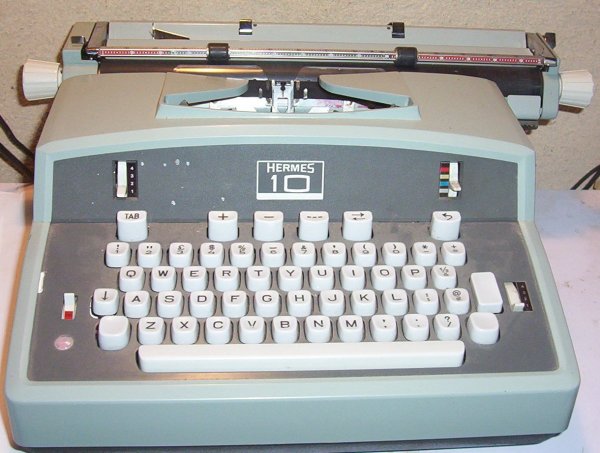
Some of the nice features include:
- the visible margins (the red ribbons
inside the bail (the bail is the rod that holds the paper down --
it has two black rollers on it)
- selectors for key pressure, impression and ribbon colour
- two fold-up paper stands
- though electric, it takes standard ribbon spools, so no problems
with unobtainable cassettes and cartridges
- carriage wide enough to hold landscape office paper
- easy typing action, with relatively little pressure required, and
fast response so you don't leave it behind when you type
From the side, you can see that it is quite bulky. The keys are further
above the desk than for most manuals, each within its own cutout in the
top plate. The row of six unevenly spaced large and tall keys at the top
of the keyboard control tabs, margin release and backspace, with the
backspace top-right, where a computer user would expect it. This is
quite a nice machine for a computer user who wants to hear typebars go
thwack. Which they do. Loudly.
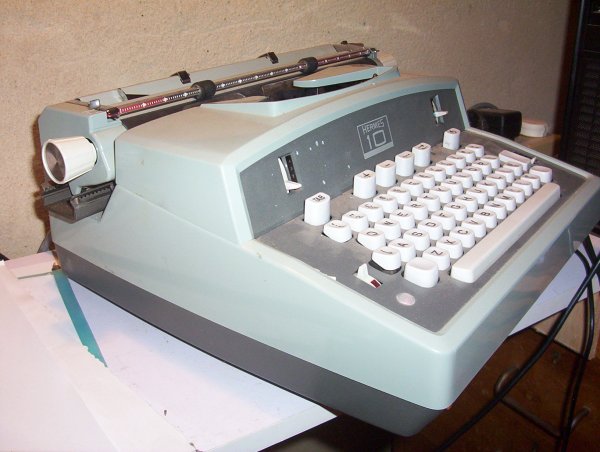
With the ribbon cover off, you can see the conventional spools and
basket. The serial number is on the raised metal tag on the left.
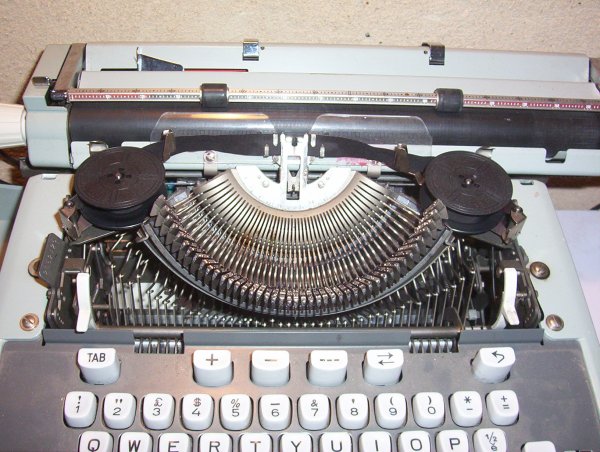
The thing was made by Paillard in Switzerland, and the build quality
does seem pretty good; this was made in 1971 (serial number 2052425),
though I am not sure how much use it has had -- I suspect it spent a lot
of time in its case. Some thin plastics here and there, but a lot of
metal, too.
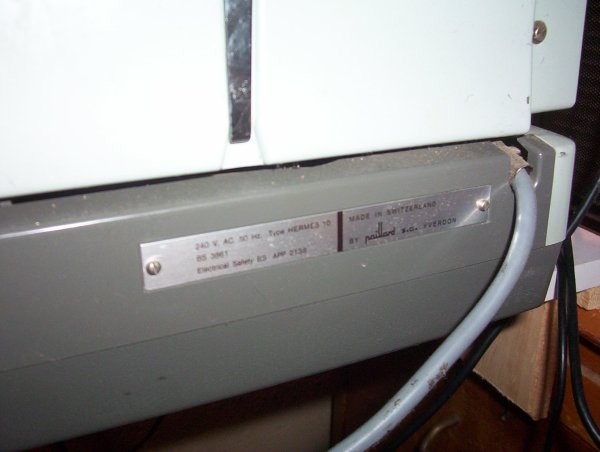
Here is the keyboard in more detail. A useful selection of characters --
just an accented e for variety. The vertical, unlabeled rectangle on
the right is the return key. The squarish unlabeled keys low down are
shifts. Not big, but big enough, I find. The big key at the top, with a
+ on it, sets tabs. The - key clears a tab and the - - - key
clears all tabs at once. This is a machine quite suitable for office
use.
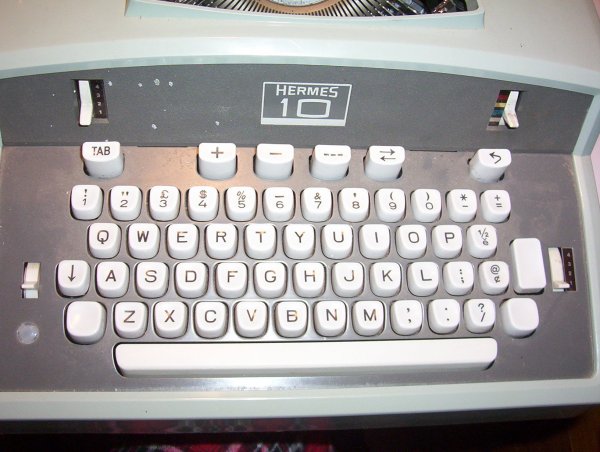
Here is a sample of the typeface -- nothing exciting, I'm afraid. A
little bottom-heavy, so perhaps I need to adjust something, but clear
and very well aligned.

Here are some relevant links:
Conclusion: a terrific example of the pre-electronic electric
typewriter.
Home





